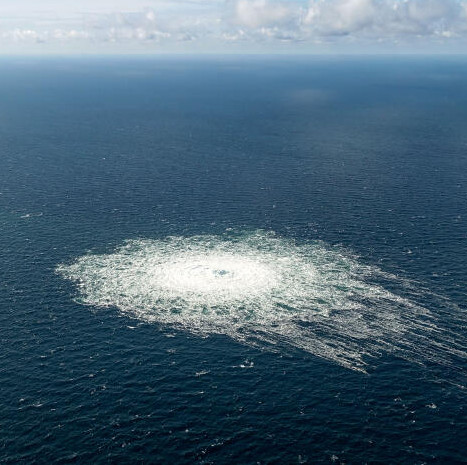This year, the national calendar abounds in milestone and semi-milestone “northern” dates, at a cursory glance I have counted, at least twenty of them - from Uleb’s primordial march - to the Russian polar expedition “Arctic 2007”, which in summer will celebrate its fifth anniversary. Between them there is a series of large and small breakthroughs into the Arctic area, carried out by Russian pioneers in the name of understanding the mysteries of nature, discovery and adherence to the state of new territories.
It is worth remembering here the brightest events such as the 150th anniversary of the march of Paul Krusenstern’s expedition on the schooner Yermak, the 100th anniversary of Georgiy Sedov’s tragic march to the North Pole, the 100th anniversary of the schooner St. Anna’s march under the command of Georgiy Brusilov, which died in the ice, and the 100th anniversary of the schooner Hercules’ shoot towards Spitsbergen under the command of Vladimir Rusanov.
Earlier Rusanov managed to successfully explore New Land, and on Spitsbergen - to discover rich hard-coal deposits, to set almost 30 witness corners securing the right to mine coal to Russia. He could return in triumph to his native shores, but Rusanov succumbed to the dream of clarifying the issue of the Northern Sea Route and took a course to the east. The expedition was lost, 22 years later its remains were found in Taimyr. It is known that on board the Hercules there was a woman – Rusanov’s fiancee, a Frenchwoman, Juliette Jean, who fulfilled the role of healer. Many of the sailors, remembering the old maritime superstition, were unhappy with the presence of woman on board, but there was nothing to do...
And this is not the first time when aboard the Russian ship on the Arctic expedition, there was a “fatal” female persona. In the museum Tarusa I saw stylish leather shoes - step ins, on high French heels, in the form of a wine glass, that had lain nearly 270 years in permafrost. It is worth telling about their owner, Tatiana Pronchishcheva, Lieutenant Basil Pronchishchev’s wife, only because she was first to be the world’s female polar explorer.
The story extends back over 270 years, and begins in the spring of 1742, when the Empress Anna Ivanovna’s decree was issued to organize the Second Kamchatka Expedition. And Captain-Commander Vitus Bering was appointed the expedition leader again. It was a continuation of Peter the First’s “great things” because the First Kamchatka Expedition was Peter the Great’s hot idea. One of its achievements is the discovery of the Bering Strait.
The second Kamchatka expedition, which will be discussed, is the largest research project in human history, carried out by efforts of one state. More than five thousand people took part in it; their tasks were so grandiose that seemed impractical. Almost all members of the expedition perished, including Vitus Bering. The price of northern mysteries, which were wrested from nature, was almost always tragic.
The results of the labor of the expedition members are astounding even today. They managed to describe all the Russian northern and eastern sea borders from Arkhangelsk to Okhotsk, explore vast interior spaces of Eastern Siberia, the Kuril and Aleutian Islands, to “feel” for ways to Japan and America, to discover many unknown islands. The Russian coast of the two oceans - the Arctic and Pacific was mapped out.
Behring divided his army of pioneers into seven detachments. Lieutenant Basil Pronchishchev was appointed commander of one of them. A task was assigned for the detachment of 50 men – to go on the double-boat Yakutsk through the Siberian rivers to the ocean, exploring nature, plotting a map as detailed as possible, and then to get to the New Earth, opened by the Novgorod merchants in the XI-XII centuries. Besides sailors, in Pronchishchev’ detachment there was also his friend and fellow student from St. Petersburg Naval Academy, navigator, land surveyor, and hieromonach Semyon Chelyuskin.
The young Lieutenant embarked on a voyage just after the wedding ceremony, taking with him his wife Tatiana. Of course, this was a violation of maritime tradition, but this happened. They got married for big love and did not want to part with each other. This amazing couple once again proved to the world that the great love exists, all-powerful and sacrificial.
...The Yakutsk put to sea, but soon made water. In late August, the detachment was forced to stop for the winter at the mouth of the Olenek River. Only eleven months later, on 3 August 1736, they continued their march. First Peter I Islands and Samuel Islands (now Komsomolskaya Pravda Islands) were discovered, but heavy ice blocked the path and the increasing frost forced them to turn back.
Pronchishchev was unlucky - he broke his leg, resulting in a cerebral embolism (was diagnosed in our time, at the opening of the grave). The lieutenant was lying unconscious, and the command over the detachment was taken by Chelyuskin as senior. In latitude 77° heavy ice finally blocked the road to the wooden ship. In these days Chelyuskin made a note: “The sky is cloudy and gloomy, it is freezing hard and brash ice layer occurred on the sea, from which we are in great danger, and if it lasts twenty-four hours, we are afraid we may freeze to death here. We went into the dead ice, on both sides, and also in front of us smooth ice is standing. We went rowing. But God is merciful, God grant us the capable wind, or else that brash ice has been spread.” In late August, he successfully led Yakutsk at last year’s wintering place near the Olenek River.
Basil Pronchishchev died shortly. His 26-year-old wife died of grief - there was a rumor that she was found frozen on the grave of her husband. “In the beginning of the forth hour past midnight, the former commander’s of the double boat Yakutsk Pronchishchev by God’s will his wife died...” Chelyuskin recorded in the logbook. Tatiana was buried when it was snowing. Sailors put her in a coffin in the elegant shoes, paying homage to her as a woman.
This love story deserves a bow. Tatiana and Basil seem to have known each other since childhood - their fathers served in the same regiment, and the ancestral estates were neighbors. The newlyweds proved to be that “couple of swans” who lives and dies together.
Today we even have an idea of how Basil and Tatiana looked like. Their appearance was restored through identification of the remains and the subsequent plastic reconstruction, which became possible after the expedition, undertaken in 2002 by Dmitry Shparo. This couple was good: handsome fair-haired man with unruly curls, and his frail, dark-haired girlfriend.
A memorable record about the Pronchishchevs remained, made forty years after their death by Professor Gerhard Friedrich Muller, a Russian historiographer: “He and his wife, who through hot love for him had taken this difficult sea route with him, set out from the wintering place already very ill, and their illness multiplied day to day... Anyone who knew him will attest that he was a very skilful and industrious officer, and so everybody was sorry fore him.”
…At the Far North, near the cliff Tumul in the Olenek delta looking into the white wilderness of the Arctic Ocean, “a grave for two” is frozen over in permafrost, sained by one half-ton cast-iron cross. Two coffins are closely pressed against each other – Basil and Tatiana Pronchishchevs. A bay and a peninsula in eastern part of Taimyr are named after Pronchishcheva. The cape, the river, the lake, the beach on the east side of the Taimyr Peninsula, as well as ridge between the Anabar and Olenek Rivers are named after Pronchishchev.
In the spring on their marriage tomb yellow Taimyr roses Sievers blossom, the earliest flowers of the tundra. This is a site of pilgrimage for newlyweds who want to “get the blessing” for eternal love and fidelity...
But the grave of the Pronchishchev is not only the “land of the test of love”, as locals called it. It is also one of many, as they say in the old days, “marked pillars” of the Russian presence in these latitudes, almost three centuries’ witness of Russian courage in investigating the Arctic world.










